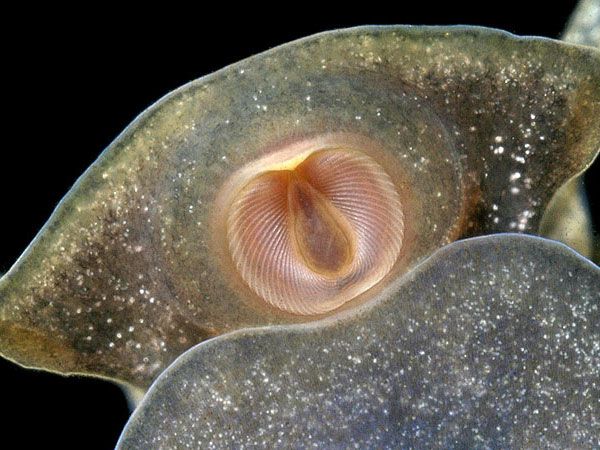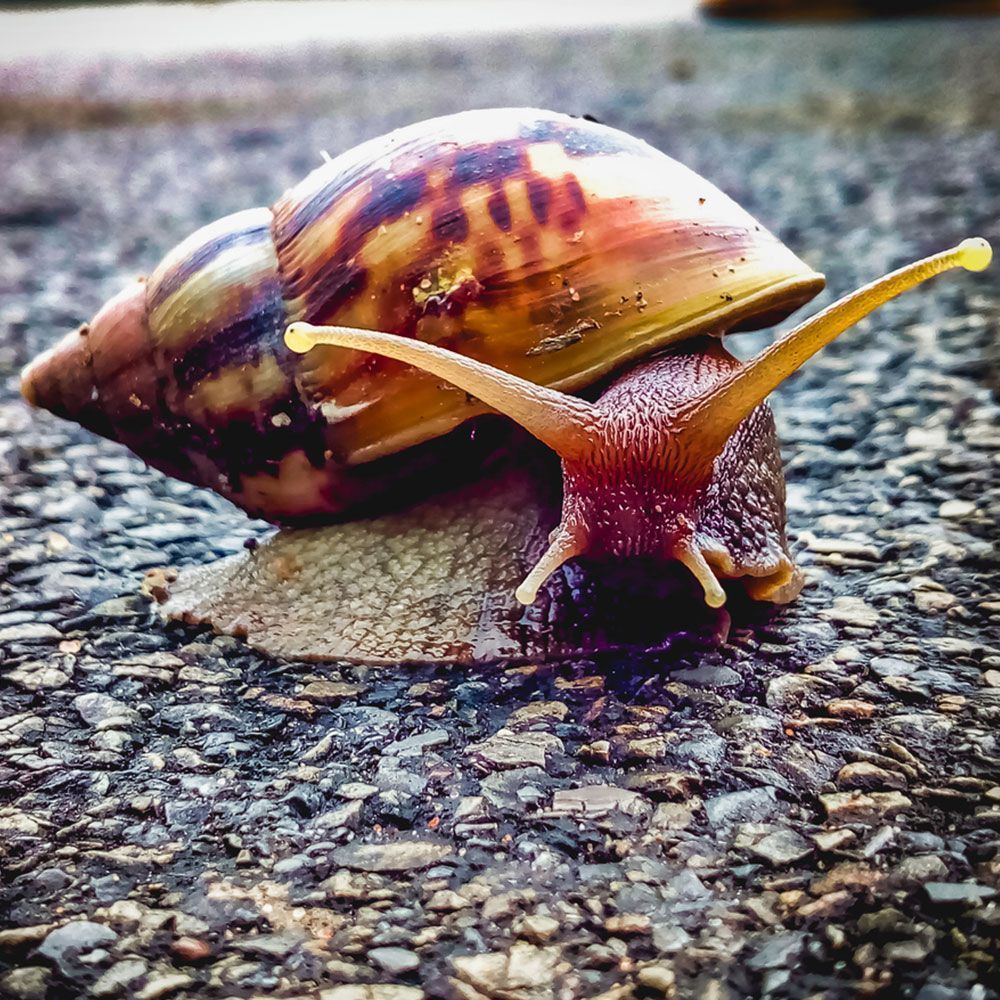In the wild, land snails eat plants, vegetables, bark, fruits, flowers, and dead and decaying plant and animal matter. Freshwater snails eat algae on rocks or corals, live and dead plants, insects, worms, fish, and waste. Saltwater snails eat algae, mollusks, other snails, worms, seaweed, small fish, and barnacles.
What do land, freshwater & saltwater snails eat in the wild? A detailed answer.
In the wild, land snails eat almost anything they get. It might be fungi, like conchs and mushrooms, different parts of live or dead plants, like leaves, branches, bark, or stem, and shells of other snails.
Water is also a must for their survival and diet. However, if that’s unavailable, land snails can survive on water from other food sources.
On the other hand, most freshwater snails live on a herbivorous diet of vegetables like peas, spinach, cucumber, lettuce, kale, cabbage, and artichoke.
If available, they also eat fruits like pears, plums, strawberries, peaches, leaves, flowers, and mushrooms.
Carnivorous freshwater snails consume mosquito larvae, terrestrial plants, insects, and leftovers from other species in the water body.
However, if none of that is available in their surroundings, they consume whatever is available. Being detritivorous, they can also live on dead plants, stems, tree bark, or worms for basic nutrients to survive.
Meanwhile, saltwater snails consume plants, animals, biofilm, cord grass, clams, oysters, scallops, and sea slugs.
All snails also eat eggshells and the shells of other dead snails to fulfill their need for calcium needs.
Moving forward, we will mainly discuss feeding pet freshwater and saltwater snails in your home aquarium. So, let’s get started!
What do aquarium snails eat?
What do Freshwater Snails Eat?
If you want to build a freshwater aquarium with snails or are just a bit curious about them, you should definitely know the basic things about their diet and feeding habits.
What not to feed freshwater snails?
For starters, never feed them processed food (bread, pasta, rice) with lots of sugar, salt, or vitamin C. Such a diet can burn your pet snail’s body. Instead, you must also ensure that the diet has plenty of calcium.
What is the frequency of freshwater snail meals?
Usually, it’s recommended to feed them twice daily. But, this feeding frequency and amount may vary depending on the size and dietary needs of the particular species. In fact, snails eat until they are completely full, so there’s no chance of overfeeding them.
What are the types of freshwater snails and their food?
| Snail Name | Diet Type | Food |
|---|---|---|
| Nerite Snails | Primarily Herbivorous, Omnivorous | Algae, blanched vegetables, wafers, fruits, meaty fish |
| Mystery Snails | Omnivorous | Algae wafers, biofilm, blanched vegetables, live or freeze-dried meat, fish flakes |
| Apple Snails | Omnivorous, Carnivorous, Detritivorous | Vegetables, dead fish, other snails, eggs, brine shrimp |
| Ramshorn Snails | Omnivorous | Delicate vegetables and plant stem, debris, dead fish, and any leftover fish food |
| Assassin Snails | Primarily Carnivorous | Worms, other snails, dead organisms |
| Bladder Snails | Primarily Carnivorous | Algae, insects, decaying meat, fish waste, leftover fish food |
| Malaysian Trumpet Snails | Omnivorous | Algae, debris, leftovers, fish food, pellets, and flake |
| Rabbit Snails | Primarily Herbivorous, Omnivorous | Plant matter, algae, meaty food |
| Japanese Trapdoor Snails | Omnivorous | Algae, vegetables, protein-based feed |
| Black Devil Snails | Omnivorous | Delicate plants, algae, and other organisms |
What do Saltwater Snails Eat?
If you have a saltwater aquarium and want an appropriate snail for it, their dietary needs may vary a bit. But like freshwater snails, they also need plenty of calcium in their diet.
Depending on the food preferences, these snails usually chow down a wide variety of algae. They also eat shrimp, scallops, fish, worms, other mollusks, rocks, and substrate. Some of them even eat each other.
Many believe that “saltwater” snails can consume salt, sugar, or processed foods, unlike freshwater snails. This myth arises because they can simply survive in saline water – which is entirely false!
Rather, saltwater snails have a little higher salt concentration in their bodies. They can stand seawater of similar concentration.
On the other hand, when put in water with higher salt concentrations, they migrate toward low salt concentration waters. But if that’s not a possibility, they face a devastating death.
What are the types of saltwater snails and their food?
| Snail Name | Diet Type | Food |
|---|---|---|
| Vermetid Snails | Primarily Herbivorous, Detritivorous | Algae, fish poop, plankton, detritus |
| Fighting Conch Snail | Omnivorous | Algae, bacteria, detritus, all leftover food |
| Turbo Snails | Grazing Herbivores | Algae, seaweed, diatoms, cyanobacteria |
| Nassarius Snails | Primarily Carnivorous Scavengers | Brine shrimp, seafood, larvae, meaty leftovers, detritus |
| Conch Snails | Primarily Herbivorous, Omnivorous | Filamentous algae, seaweed, detritus |
| Trochus Snails | Herbivorous | Scrapes off diatoms and algae from aquarium bodies or corals |
| Bumblebee Snails | Primarily Carnivorous, Omnivorous | High protein diet of meaty leftovers, dead organisms, tiny worms, or smaller snails |
| Cerith Snails | Detritivorous Scavenger | Leftover, fish poop, dead and decomposing materials |
| Astrea Snails | Herbivorous | Different types of microalgae |
| Turban Snails | Primarily Herbivorous, Omnivorous | Dried seaweed, algae, diatoms, cyanobacteria |
| Margarita Snails | Primarily Herbivorous, Omnivorous Scavenger | Green and brown algae, spirulina, leftover food of other species |
How do snails eat?
Snails have a jaw with a radula in their mouth, which holds great significance in their eating process.
The radula is an organ that looks much like a tongue but has several rows or thousands of microscopic teeth. It helps the snail break down their food into multiple smaller bits.

Snails move their radula back and forth on other surfaces to scrape off the food on the surfaces. This action is much like how you rub sandpaper to wear something down.
Much like sandpaper, snail radula also wears down with time. In fact, snails have to regrow these teeth-like structures repeatedly throughout their lifespan.
But not all snails rub their radula on the food surface. Some also use it to drill holes into clams and oysters to eat the contents.
How does a snail sound while eating?
Are you even more curious about the sounds the species make when they munch on their snacks?
Luckily, you’re in for a great treat if that’s the case!
Scientists from BBC Earth Lab have recorded this amazing sound of a snail scarfing down on a lettuce leaf. They used a highly sensitive small microphone for this.
So, if you can’t wait to hear this satisfying audio, watch the video below:
A word from FishInAquarium
Snails can adjust to most kinds of environments and consume any food available. They are usually low maintenance which makes them a great choice for your aquarium pet. So, once you know the particular snail’s preferences and basic needs, raising one is pretty easy!
With that said, if you got a clear answer to your question and even thinking about getting one, share the article with other aquarium enthusiasts.
But do you have questions? Well, mail us to get more answers right away!


